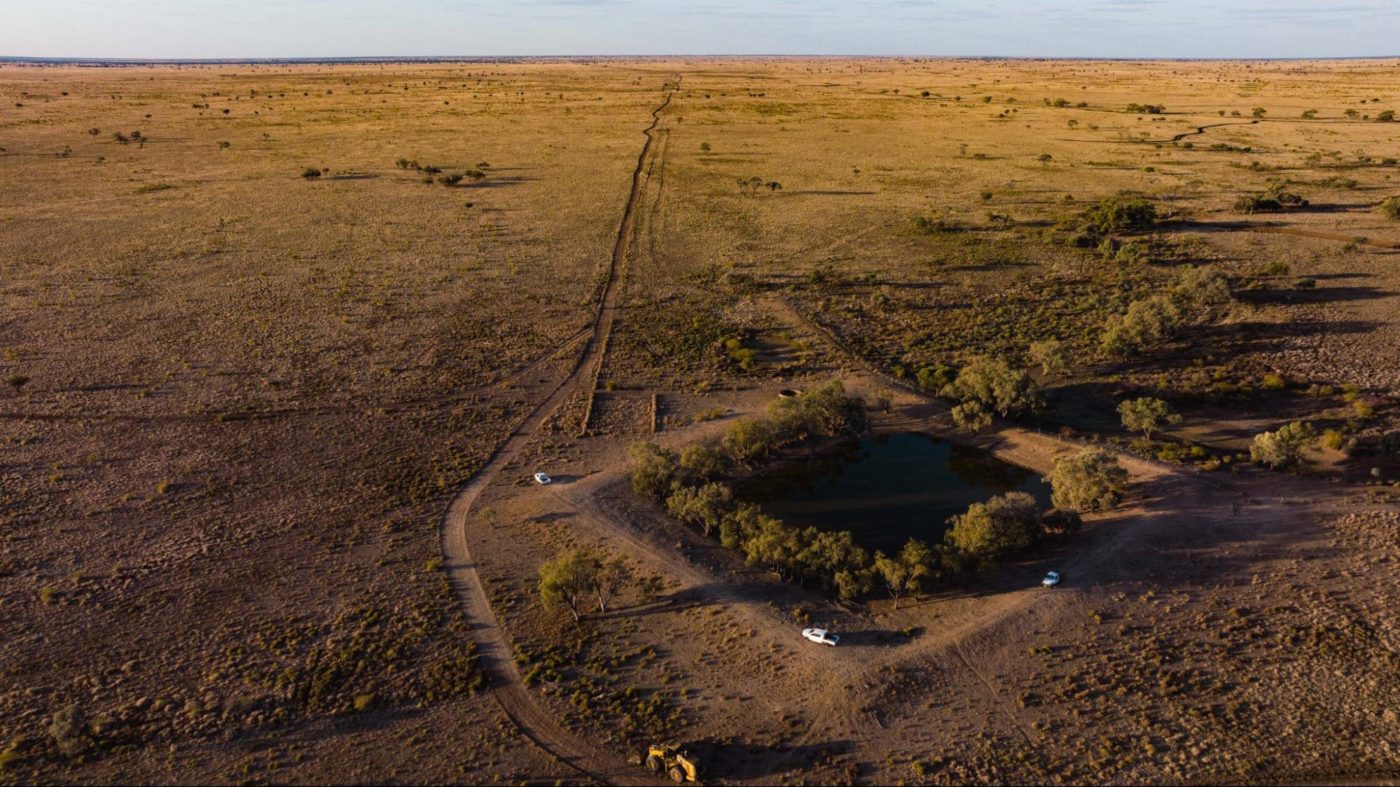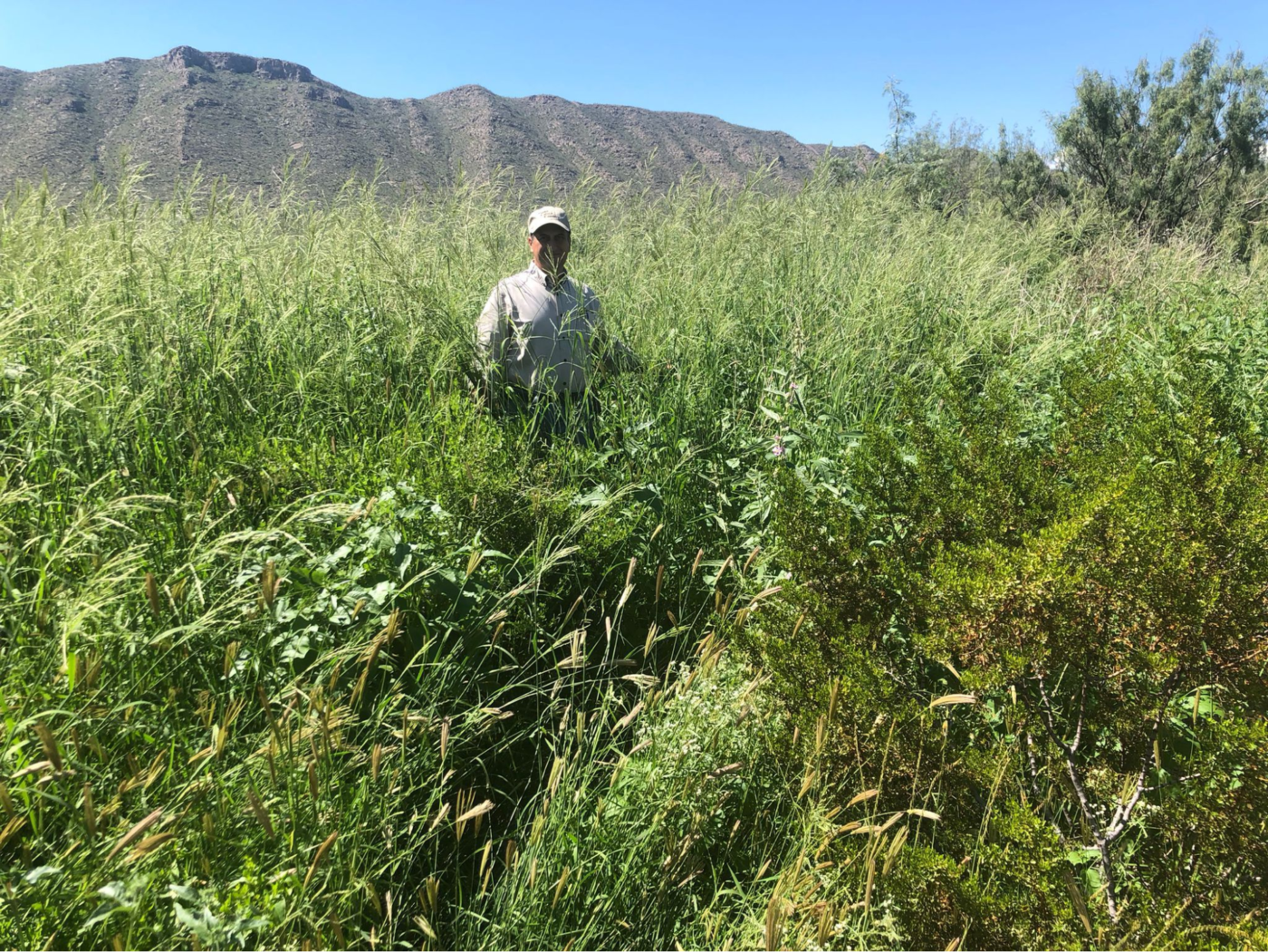Rain-ready rangelands: Staggering potential on a vast scale
Rangeland graziers see immense opportunity for repair and productivity.
The vast, semi-arid regions of Australia are often referred to as the ‘rangelands’ and an incredible 81 percent of Australia is considered rangelands. In these dry environments, moisture is a perennial challenge, increasingly so with shifting climate patterns. When the landscape isn’t functioning well, water falls during rain events and disappears, sometimes within the day. Disrupted flows of water can cause ever increasing erosion. With water arriving so infrequently and leaving so fast, plant growth and diversity suffers, leading to desertification.
Despite widespread degradation, many graziers see the immense possibilities for landscape repair through agriculture. And with a small number of landholders managing such a vast area there are enormous opportunities to turn things around. This is the focus of our latest podcast episode ‘Rain ready rangelands’.
Listen to the episode or find it in your favourite app.
Ranglands grazier Jody Brown lives and works on the 45,000 hectare Latrobe Station near Longreach, and features in the episode. She grew up with a deep connection to the environment and a desire to heal the land.
“It’s such a turbulent climate out here. We have such volatile seasons and extremes and a lot of high temperatures and droughts. You’re so aware of the presence of the land beneath you and just rolling out to the horizons, as far as the eye can see. And the sky, like the sky has its own presence. It’s so huge, you know, the big sky country. It really is a complete kaleidoscope of life and it’s a mosaic Because of all the different species, right, there’s different colours, textures, patterns, shapes, it’s all happening.
But it’s once you’re amongst it and you look down and into things that you see, like just the breathtaking diversity. Different types of species of grass, and then there could be 50 or 60 different annuals, your little forbs and legumes and just different plant species. And then once you start talking bird life, lizards, wildlife, it’s pretty phenomenal.” – Jody Brown
‘It blows me away with its immense capability to recover, to be resilient.’
Jody has witnessed the effects of degradation in the rangelands and talks about the fragility of the landscape and how the collapse of one cycle can have a cascading effect, quickly collapsing other natural cycles. But she has seen first hand what just a few changes can do to allow the landscape to restore its function.
“It blows me away how quickly it can transform. You just get this carpet of green come up just almost immediately. And obviously how healthy the landscape is plays into how well it recovers, it blows me away with its immense capability to recover, to be resilient.” – Jody Brown
Jody has been working with farmer and rehydration consultant Glenn Landberg. Glen also happens to be a pilot, and says this bird’s-eye view gives him a unique perspective of what’s possible in restoring landscape function the rangelands, especially in relation to how water moves on and through the landscape during and after rain events.
“From the air, you get to see where it is damaged and any bare soil or erosion really stands out but you can also see how sometimes the smallest of little interventions, because a lot of it’s so incredibly flat, the smallest of interventions can help restore it.” – Glenn Landsberg
Glenn has been working with Jody to fix some of the erosion features that have gone past the point of being able to heal themselves. In a rain event these gullies would drain enormous amounts of water from those areas. The targeted earthworks that Glen has been doing with Jody and others has slowed the movement of water down during flooding events, allowing it to hang around for longer. The effect of this is more grass growth and root development, which means a healthier and more aerated soil with a greater capacity to absorb water, and ultimately a more resilient, rain-ready landscape. This is just the first step in re-establishing the natural system’s functioning on their property.
“This most recent amount of work with the chain of ponds and the leaky weirs only just filled up, probably about a month ago from rain. We did fly over them once the sumps and the earthworks were full of water and just see the way that it had altered the water moving across the landscape.” – Jody Brown
Inspiration for building diversity, from the Chihauahaun desert
Jody is also looking to shift her grazing practices by grazing more intensely, with higher density, but for shorter periods and letting the land rest for much longer. Jody was inspired by the success stories of Alejandro Carillo, a rancher from the Chihuahuan desert in Mexico who has become well known around the world for using livestock to restore soils and landscapes in a desert environment.
“Most grasslands are dying not because of too many animals. But because of undergrazing, because we all need to remember that grass is co-evolved with grazers. And those grazers could be livestock, could be wildlife, you know. Grasses need to be eaten at some point. That idea of resting a place five to ten years is not a good idea, because your grasses are going to start decaying and oxidising and dying. So at some point in time, you need to do a good grazing, like intensive grazing.“ – Alejandro Carillo
Alejandro mainly relies on livestock to manage the pasture. He moves them twice a day, by dividing his pasture into long, narrow strips that are then divided further with short lengths of temporary wire to allow him to precisely control and match grazing durations to the condition of the land. This is also known as strip grazing. By using this method, he is also able to rest each area for up to 18 months at a time before returning livestock to the area. This allows him to manage extended drought without having to sell his breeding stock.
Alejandro believes that mimicking nature and applying the right amount of grazing pressure are key to having healthy pastures and landscapes.
Over time, Alejandro has seen the grasses on his ranch stay greener for longer, and has observed an explosive growth in diversity. His pastures have gone from around 10 grass species about 15 years ago to having over 100 different species today. And Alejandro is aiming for more than 200 different species of grasses, forbs or herbs growing in the pastures, a diversity he says would greatly improve the health of his animals.
As the health of the soil and land has improved, Alejandro has also seen biodiversity increase:
“We’ve been working all these years with the bird conservancy organisations in the U.S. These birds, migratory birds, come from southern Canada and northern U.S. And they winter here in our grasslands, so we don’t have grassland, then we break the whole cycle. Those specific birds have been declined up to 70%. Only 30% remain in the last 40 years. So we are really a very critical link.”
Alejandro at Las Damas Ranch, Chihuahua, Mexico.
“And we need to keep in mind that the more diversity you have, the more resilient you become.” – Alejandro Carillo
It’s about the people
Jody explains that one of the biggest challenges to adoption of these new approaches to rangelands management is not actually about soil health, biology, water cycles, earth works or grazing practices, but about people.
“I honestly think one of the biggest challenges is that idea of the handing over of knowledge tied in with succession. Because we have such a transient population out here, we don’t have that same level of one generation to the next handing down knowledge about landscapes. And obviously the tremendous wealth of knowledge and wisdom within first nations communities has been disrupted so, when we learn something, how do we pass that on? “
And this is why, for Jody, it’s all about building community and connection between rangelands graziers.
“Once you start building community around regenerative principles in your rangelands, you only have to impact and reach a handful of people to then see positive change at ecosystem scale. Because we are talking about such vast areas, the potential of that is staggering.”
Jody Brown at Latrobe Station
Resources
-
Follow Jody Brown on LinkedIn and find out more about Latrobe Station on Facebook
-
Alejandro Carillo can be found online on Instagram and LinkedIn and you can read more about Las Damas ranch desertgrasslands.com
-
Glenn Landsberg can be found on LinkedIn
-
A film has also been released about this conference and rangelands regeneration
-
In the episode, Glenn mentions maps of what used to be the ‘native grain belt’. A representation of this map can be found on page 3 here








